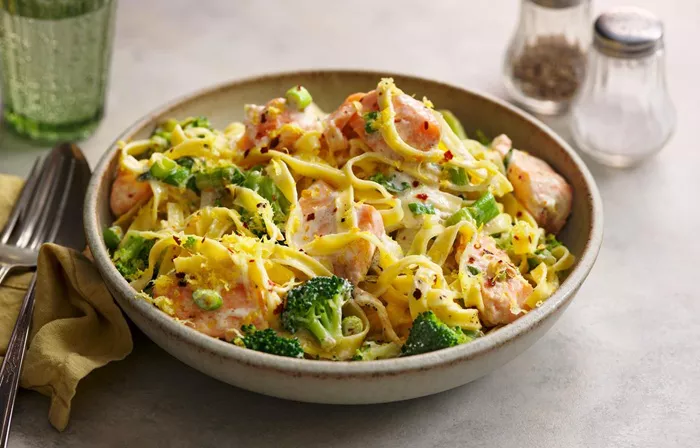Pasta is one of the most popular foods in the world. It is easy to cook, affordable, and enjoyed by people of all ages. Many families include pasta in their weekly meals. Some even eat pasta every day. But is this a healthy habit? In this article, we will explore the benefits and risks of eating pasta daily. We will also look at how pasta fits into a nutritious diet, especially for children and families. By the end, you will better understand how to enjoy pasta in a balanced way.
What Is Pasta Made Of?
Most pasta is made from wheat flour and water. Some types include eggs. Pasta can also be made from whole grains, legumes, or vegetables. Traditional pasta is high in carbohydrates, which provide energy. Whole grain pasta contains more fiber, vitamins, and minerals than white pasta.
Nutritional Value of Pasta
Carbohydrates for Energy
Pasta is rich in carbohydrates, which are the body’s main source of energy. This is important for growing children and active adults. Eating pasta can help keep energy levels stable throughout the day.
Low in Fat
Plain pasta has very little fat. It is naturally low in cholesterol. This makes it a good choice for people who are watching their fat intake. The toppings or sauces used with pasta, however, can change the fat content.
Contains Protein
Pasta made with eggs or whole wheat contains some protein. Protein is important for building muscles, tissues, and for growth in children.
Fortified Nutrients
Many pasta products are fortified with iron and B vitamins, such as folic acid. These nutrients support red blood cell production and brain function.
Benefits of Eating Pasta Regularly
Easy to Prepare
Pasta is quick to cook and easy to serve. This makes it a practical choice for busy families, especially with young children.
Versatile Meals
Pasta can be served with vegetables, lean meat, or beans. This allows families to create balanced meals with different flavors and textures. It can be made healthy when paired with the right ingredients.
Affordable
Pasta is a budget-friendly food. It can feed many people at a low cost, making it an ideal meal base for families with children.
Is It Safe to Eat Pasta Every Day?
Eating pasta every day can be safe if it is done in a balanced way. However, there are some things to consider.
Too Many Refined Carbohydrates
Most traditional pasta is made from refined flour. Refined carbs may cause blood sugar to rise quickly. Eating too much refined pasta may lead to weight gain or increase the risk of type 2 diabetes. It is better to choose whole grain pasta when possible.
Portion Size Matters
Eating large portions of pasta daily may add too many calories. This is especially important for children, who need balanced nutrition for growth. Serving pasta with vegetables and proteins can help control portion size and improve nutrition.
Watch the Sauce
Heavy cream sauces, too much cheese, or processed meat toppings can turn pasta into an unhealthy meal. Choose tomato-based sauces, olive oil, or herbs to keep the dish healthy.
Gluten Sensitivity
Some people have celiac disease or gluten intolerance. Traditional pasta contains gluten. These individuals should avoid wheat-based pasta and choose gluten-free options like those made from rice or lentils.
How Does Pasta Fit Into a Child’s Diet?
Pasta can be a healthy part of a child’s daily meals. Children need energy, and pasta provides it. The key is balance. Serve pasta with vegetables and protein. Choose whole grain or enriched pasta when possible. Avoid sugary or heavy sauces. For more details on toddler science nutritious diet, check our nutrition page.
Is Pasta Good for Pregnant Women?
Yes, pasta can be good during pregnancy. It provides energy and is easy on the stomach. Whole grain pasta offers fiber, which helps reduce constipation during pregnancy. Look for fortified pasta with folic acid, which helps prevent birth defects.
Whole Wheat vs. Regular Pasta
Whole Wheat Pasta
Whole wheat pasta keeps the bran and germ of the grain. This means more fiber, iron, and B vitamins. It helps digestion and keeps you full longer.
Regular White Pasta
This pasta is made with refined wheat. It has fewer nutrients and less fiber. It is softer and often preferred by children, but it is best to enjoy it occasionally or mix it with whole grain types.
Tips to Make Pasta Healthier
Watch the Portion
A healthy portion is about one cup of cooked pasta. Children may need less, depending on age and activity level.
Add Vegetables
Mixing in broccoli, tomatoes, spinach, or carrots increases vitamins and adds color to the meal.
Include Lean Protein
Add chicken, beans, tofu, or fish to boost protein and make the meal more complete.
Choose Healthy Sauces
Use olive oil, garlic, lemon juice, or tomato sauce. Avoid creamy or cheese-heavy sauces that add extra fat and calories.
Try New Types
There are many pasta options today—made from lentils, chickpeas, brown rice, or quinoa. These are rich in protein and fiber, and are great for variety and health.
Conclusion
So, is it good to eat pasta every day? It can be part of a healthy eating pattern if balanced with vegetables, protein, and whole grains. Pay attention to portion sizes and the type of pasta and sauces used. Pasta is not unhealthy by itself. What matters most is how it is prepared and what is added to it. For growing children, active adults, and even pregnant women, pasta can be a nutritious and enjoyable food. To learn more about building a healthy diet, visit our full guide on nutritious eating.
Related topics:


